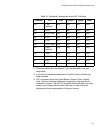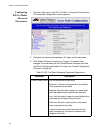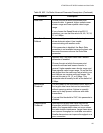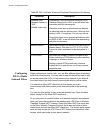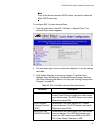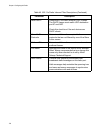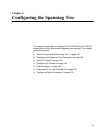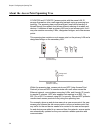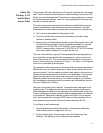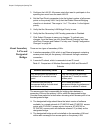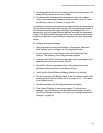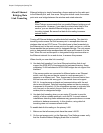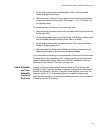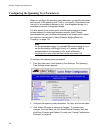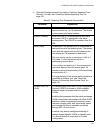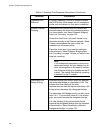AT-WA7500 and AT-WA7501 Installation and User’s Guide
131
About the
Primary LAN
and the Root
Access Point
The primary LAN (also called the root IP subnet) contains the root access
point, which initiates the spanning tree. When choosing the primary LAN,
ideally you should choose the IP subnet that contains gateways or servers
for the wireless end devices. However, these gateways and servers may
also be on another subnet.
The root access point coordinates the network and distributes common
system parameters to other access points and end devices. Consider
these selection criteria when choosing which access point to be the root:
The root must be installed on the primary LAN.
The root should be an access point that does not handle a large
volume of wireless traffic.
Because the root distributes parameters to the child access points, the
root should have the latest version of software available. In a mixed
network of an AT-WA7500 or AT-WA7501 access point with AT-
WL2411 access points, choose an AT-WA7500 or AT-WA7501 access
point with software release 2.2 (or later) as the root.
The root is elected from a group of access points that are designated as
root candidates: access points that are powered on, active, and do not
have a root priority of 0. The access point with the highest root priority is
the root. Root priority can range from 0 (off) to 7. The value 1 is the highest
priority for a participating access point.
The election process also occurs in the event of a root access point failure.
Besides the root, you should have two or three access points with a non-
zero root priority. (Use the selection criteria listed earlier in this section to
determine which access points should be root candidates.) If two access
points have the same root priority, the access point with the highest
Ethernet address becomes the root. You should configure your network
with overlapping coverage so that the network can automatically recover
from any single point of failure.
After the root access point is elected, it transmits hello messages on all
enabled ports. The spanning tree forms as other access points receive
hello messages and attach to the network on the optimal path to the root.
A non-root access point also transmits hello messages after it is attached
to the network. Each hello message contains the LAN ID of the access
point that originated the message. IAPP does not allow wireless links to
exist between access points that do not have matching LAN IDs.
To configure a root access point
1. Using the selection criteria listed earlier in this section, determine
which access point to configure as the root.
2. On that access point, from the main menu click Spanning Tree
Settings. The Spanning Tree Settings screen appears.



